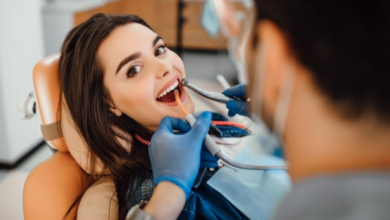Vertebral Bends And Their Scoliosis treatment

Scoliosis treatment is a condition in which the spine curves in one direction. The bending can occur anywhere along the spine, although the mid and lower spine is the most typically affected areas.
Scoliosis is most frequent in later childhood or early adolescence when the individual is still developing faster. Females are more likely to be impacted than males. Although scoliosis treatment is accessible now, identifying the problem may take longer.
Scoliosis is not often visible; however, some persons with this disorder may slump in one direction or have unequal hips or collars due to the spine’s curvature.
Almost all of the time, the individual does not require therapy since the bend does not advance much. Physicians prescribe a blend of back support and physiotherapy based on the degree of curve and the stage of childhood.
Surgery may be required for a very small minority of patients with scoliosis. Persistent discomfort, respiratory issues, and a diminished capacity for activity are all potential consequences of scoliosis.
What exactly is scoliosis?
Scoliosis is characterized by a lateral C- or S-shaped bend in the vertebrae. The Cobb inclination — the angle of the curve — should be at least 5 – 10 degrees for a physician to declare scoliosis.
Scoliosis can arise at any stage in life, although it is most common among kids from 10 to 12 years or throughout a person’s adolescence. Although scoliosis is uncommon in newborns, infant scoliosis can occur before the age of three.
Scoliosis has no recognized etiology in the majority of instances. This is described as idiopathic scoliosis by physicians. Scoliosis might be associated with palsy, spinal muscular atrophy, or spina bifida in some situations. Conversely, it might be a congenital defect.
Vertebral curves are classified as structural and nonstructural by physicians.
A structural curvature is a persistent condition caused by a health issue or an accident. A nonstructural curvature indicates that the vertebrae are physically intact. In either situation, a physician will attempt to identify and fix or deal with the underlying problem with scoliosis treatment.
Treatment
Childhood and teenage curvature is usually minor and does not seek scoliosis treatment. A doctor would usually prescribe that an individual with a 10 – 25-degree tilt undergo exams at quarterly intervals to see if the problem is worsening.
A doctor may suggest guarding for a 25-40 degree slope. A doctor may prescribe an operation if the curvature is bigger than this and the bone is still developing.
Adolescent Signs
Adolescent idiopathic scoliosis is the most prevalent kind of scoliosis in teenagers. It can impact anyone between the ages of 10 to 18.
Symptoms may include any of the following:
- The skull may seem to be somewhat off center.
- Every side’s bones may be somewhat varied in height.
- Clothing might not always hang uniformly.
- One hip is more noticeable than another.
- A shoulder or collar bone may be wider than another.
- The individual may hunch one way, and the limbs may be of variable lengths.
- Some varieties of scoliosis may cause permanent discomfort, seldom severe. It is a more prevalent symptom among older people.
When determining treatment approaches, the physician will take variables into account:
- Sex: Women are more likely to suffer scoliosis that worsens with time.
- The curve’s magnitude: The intensity and kind of the curvature can influence how it proceeds. S-shaped arcs are much more prevalent in idiopathic scoliosis, while C-shaped arcs are more prevalent in neuromuscular scoliosis.
- Curve location: A bend in the middle of the vertebrae is more prone to deteriorate than a bend in the other areas.
- Skeletal maturity: If a patient’s bones have finished developing, the danger of deteriorating is reduced. In the case of growing bones, splints are more helpful.
For more valuable information visit this website





